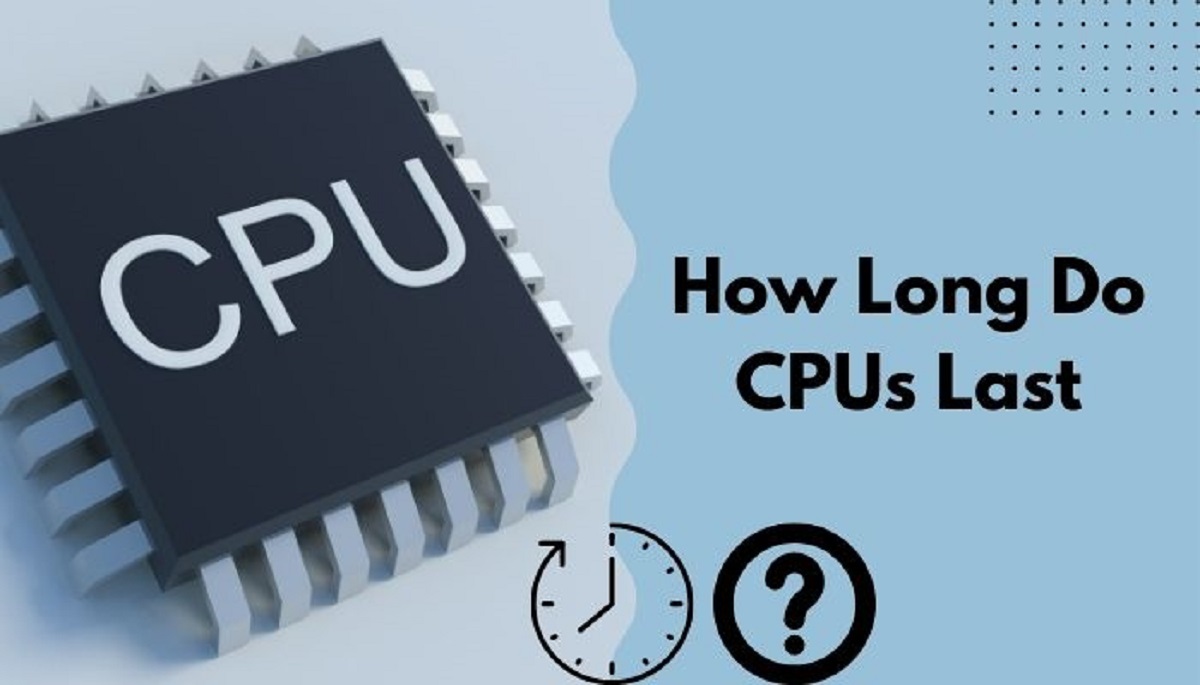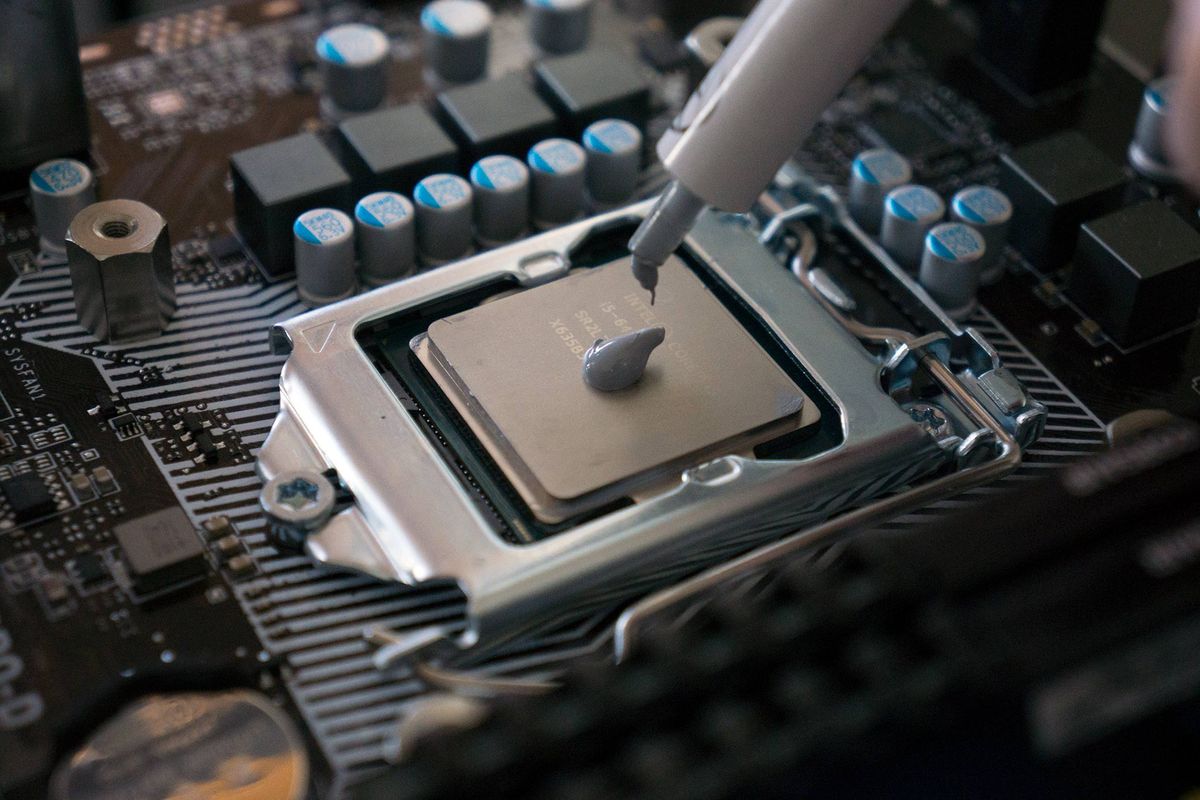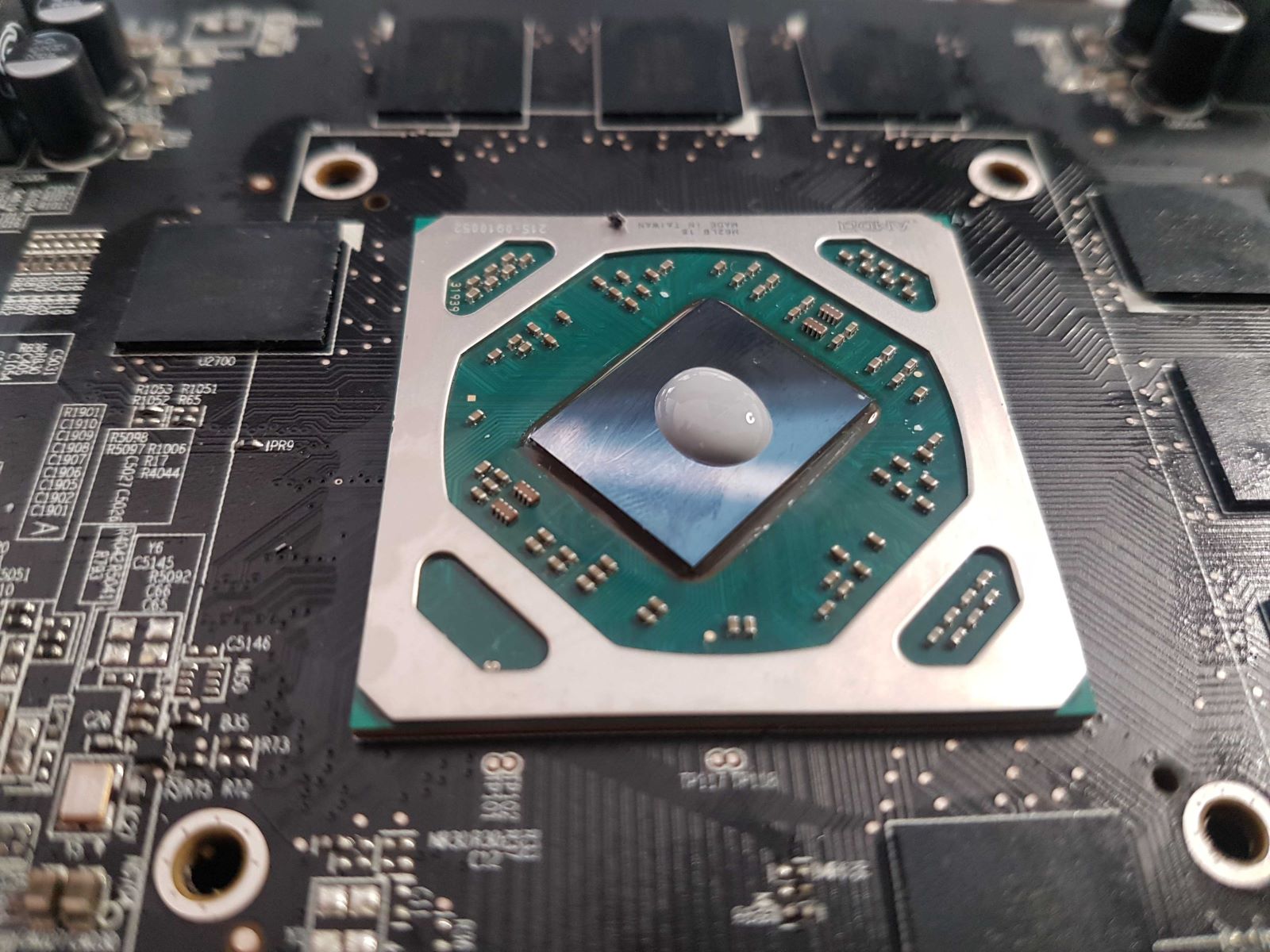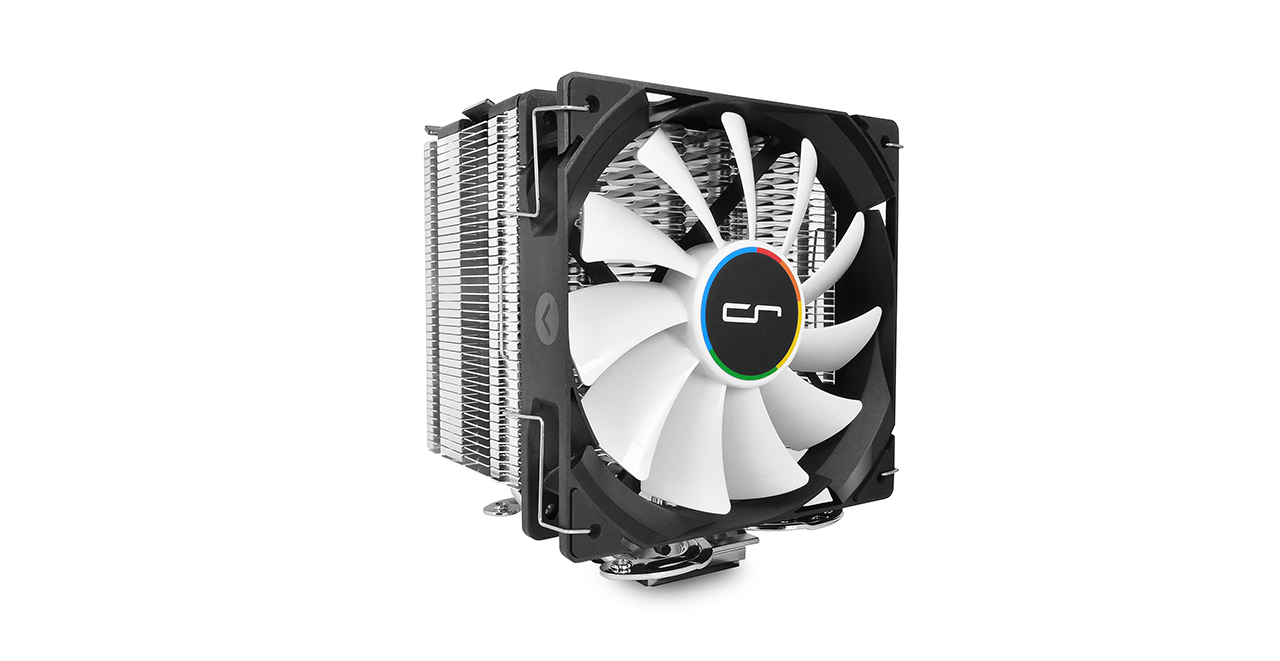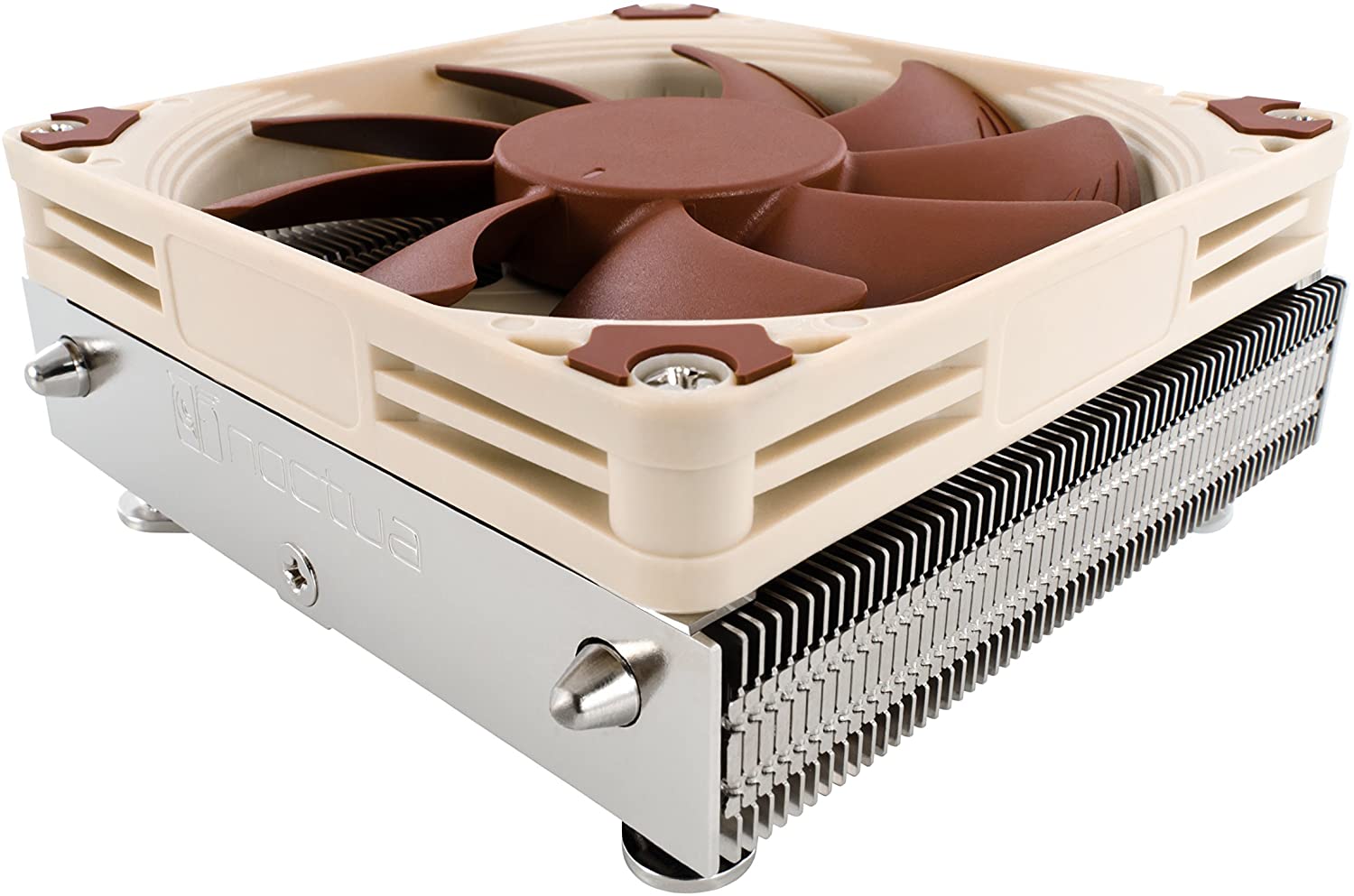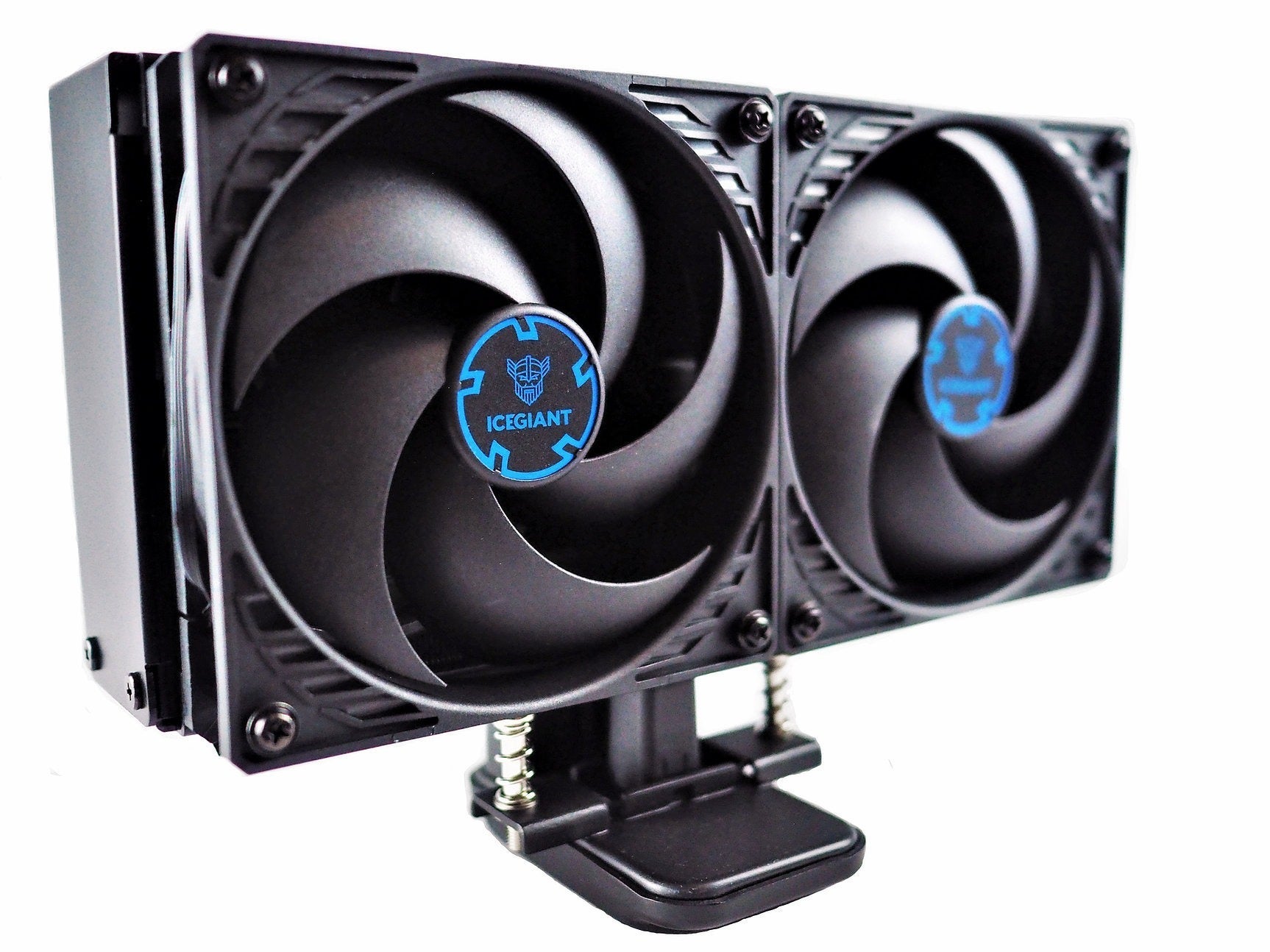What is a CPU?
A CPU, or Central Processing Unit, is the primary component of a computer that performs most of the processing inside the system. It is often referred to as the “brain” of the computer. The CPU carries out instructions of a computer program by performing basic arithmetic, logical, control, and input/output (I/O) operations. This critical hardware component is responsible for executing the instructions that enable users to perform various tasks on their computers.
The CPU comprises several essential elements, including the control unit, the arithmetic logic unit, and the cache. The control unit manages the execution of instructions, while the arithmetic logic unit performs calculations and logical operations. The cache acts as a temporary storage for frequently accessed data, which improves the overall processing speed of the CPU.
CPU performance is determined by various factors, such as the clock speed, number of cores, cache size, and architecture. These factors collectively contribute to the overall speed and efficiency of the CPU, determining how well it can handle complex tasks and multitasking.
Over the years, CPUs have evolved significantly, becoming faster, more efficient, and capable of handling increasingly demanding tasks. Technological advancements have led to the development of different CPU types, such as Intel Core, AMD Ryzen, and Apple Silicon. Each CPU type has its own architecture, specifications, and capabilities, which cater to different users’ requirements and computing needs.
Understanding the role and functionality of a CPU is crucial in comprehending its lifespan and how it can be optimized for long-term performance. In the following sections, we will explore the various factors that can impact the lifespan of a CPU and how you can ensure its longevity through proper maintenance and care.
Factors that Affect the Lifespan of a CPU
The lifespan of a CPU can be influenced by several factors, which determine how long it can effectively perform at its optimal level. These factors include:
1. Temperature and Cooling Systems: Excessive heat can significantly reduce the lifespan of a CPU. Over time, continuous exposure to high temperatures can cause the CPU to degrade or fail. It is crucial to have a well-designed cooling system in place, including proper airflow, quality thermal paste, and efficient heat sinks or cooling fans, to keep the CPU temperature within acceptable limits.
2. Overclocking and Its Impact on Lifespan: Overclocking refers to pushing the CPU beyond its recommended clock speed to achieve higher performance. While overclocking may provide a temporary performance boost, it can also generate more heat and stress on the CPU, potentially reducing its lifespan. If you choose to overclock your CPU, it is essential to balance performance gains with the potential risks involved.
3. Heavy and Intensive Workloads: CPUs are designed to handle a wide range of tasks, but prolonged exposure to heavy and intensive workloads can put a strain on the processor. CPU-intensive tasks like high-end gaming, video editing, or 3D rendering can cause increased temperature levels and high usage, potentially impacting the lifespan of the CPU.
4. Proper Maintenance and Cleaning: Regular maintenance and cleaning can play a crucial role in extending the lifespan of a CPU. Removing dust, dirt, and debris from the CPU and its cooling system can help maintain optimal airflow and prevent the accumulation of heat. It is recommended to clean the CPU and its cooling components periodically using compressed air or an anti-static brush.
5. Power Supply Issues: Instability in the power supply can also affect the lifespan of a CPU. Frequent power surges, voltage fluctuations, or inadequate power delivery can cause damage to the CPU. Using a stable and reliable power supply unit (PSU) with appropriate wattage can help protect the CPU from power-related issues.
By understanding these factors and taking appropriate measures, you can optimize the lifespan of your CPU and ensure its efficient performance for an extended period. However, as CPUs age, technological advancements may render them outdated, leading to the need for an upgrade or replacement.
Temperature and Cooling Systems
The temperature at which a CPU operates plays a significant role in its lifespan and overall performance. CPUs generate heat during normal operation, and excessive heat can degrade or even permanently damage the processor over time. Therefore, it is crucial to ensure effective cooling to maintain optimal temperature levels. Here are some key considerations regarding temperature and cooling systems:
1. Cooling Methods: There are various cooling methods available to keep CPUs at an appropriate temperature. The most common cooling systems include air cooling, liquid cooling, and passive cooling. Air cooling utilizes heat sinks and fans to dissipate heat. Liquid cooling uses a closed-loop system with coolant fluid to pull heat away from the CPU. Passive cooling relies on heat sinks alone without any fans. Each method has its pros and cons, and the choice depends on factors like CPU usage, noise tolerance, and budget.
2. Thermal Paste: Thermal paste, also known as thermal compound or thermal grease, is a material applied between the CPU and the heat sink. Its purpose is to improve heat transfer efficiency by filling micro-level imperfections, ensuring better contact and heat dissipation. When applying thermal paste, it is essential to use the appropriate amount – too little may create air gaps, and too much can impede heat transfer.
3. Case Airflow: Maintaining proper airflow inside the computer case is crucial for cooling the CPU. This involves positioning fans to create a path of airflow that moves cool air in and hot air out. The goal is to prevent hot air from being recirculated around the CPU and instead enable fresh cool air to reach it. Proper cable management can also help improve the overall airflow inside the case.
4. Cleaning and Dust Prevention: Over time, dust and debris can accumulate on the CPU and within the cooling system, hindering airflow and causing heat buildup. Regularly cleaning the CPU and its cooling components can prevent these issues. Using compressed air or anti-static brushes, carefully remove any dust or debris from the heat sink, fans, and other components. It is essential to power down the system and disconnect the power supply before performing any cleaning.
5. Monitoring Software: Installing system monitoring software can help keep track of CPU temperature and other crucial parameters. Monitoring software allows users to analyze real-time temperature readings and receive alerts when the CPU reaches high temperatures. This allows for proactive measures to address cooling issues, such as adjusting fan speeds or reapplying thermal paste.
By ensuring proper temperature management and effective cooling systems, you can maintain a healthy operating temperature for your CPU, promoting its longevity and sustaining optimal performance. Regular monitoring, cleaning, and appropriate cooling solutions are essential for safeguarding the CPU from heat-related damage.
Overclocking and Its Impact on Lifespan
Overclocking refers to the process of running a CPU or other hardware component at a higher clock speed than its rated specifications. This can provide a significant increase in performance, allowing for faster processing and improved system responsiveness. However, overclocking also poses potential risks, including its impact on the lifespan of the CPU. Here are some key considerations regarding overclocking:
1. Increased Heat Generation: When a CPU is overclocked, it tends to generate more heat than it would at its stock clock speed. The increased heat can put strain on the processor, potentially leading to accelerated wear and tear or even permanent damage. To offset this, proper cooling measures, such as robust cooling systems and efficient heat sinks, are crucial in dissipating the additional heat effectively.
2. Voltage Increase: Overclocking often requires an increase in voltage to ensure system stability. Higher voltages can lead to more power consumption and heat generation, as well as potential voltage spikes that could damage the CPU. It is important to understand the safe voltage limits for your CPU and to make adjustments within these limits to minimize the risk of premature degradation of the processor.
3. Voiding Warranty: Overclocking typically involves modifying the default settings of the CPU, which may void the warranty provided by the manufacturer. This means that if any damage occurs to the CPU while overclocking, you may not be eligible for a replacement or repair under warranty. It is essential to review the warranty terms and conditions before attempting any overclocking.
4. Stability and Reliability: Overclocking can make a system more prone to instability and crashes. Running a CPU beyond its rated specifications may result in occasional system freezes, blue screens of death (BSOD), or even data corruption. This can have negative consequences for tasks that require reliable and consistent processing, such as critical applications or professional workloads.
5. Lifespan Considerations: While overclocking can provide a performance boost, it also introduces additional stress on the CPU, potentially shortening its lifespan. The exact impact on lifespan depends on various factors, including the degree of overclocking, the quality of cooling systems, and the workload the CPU is exposed to. It is important to carefully balance the performance gains with the potential risks and consider the long-term implications of overclocking.
For those interested in overclocking their CPUs, it is crucial to have a solid understanding of the associated risks and take appropriate precautions. This includes implementing effective cooling solutions, monitoring temperature and voltage levels, and gradually testing and adjusting settings to find a stable and safe overclock. By approaching overclocking with caution and informed decision-making, you can potentially enjoy improved performance without significantly compromising the lifespan of your CPU.
Heavy and Intensive Workloads
CPUs are designed to handle a wide range of tasks, but continuous exposure to heavy and intensive workloads can put significant stress on the processor. Heavy workloads refer to tasks that require substantial computational power, such as video editing, 3D rendering, scientific simulations, and gaming. Here are some key considerations when it comes to heavy and intensive workloads:
1. Increased Temperature: Heavy workloads often result in increased CPU usage, which leads to higher temperatures. The sustained high temperatures can accelerate the degradation of the CPU over time, potentially reducing its lifespan. It is crucial to ensure effective cooling systems, including quality thermal paste, heat sinks, and adequate airflow, to mitigate the impact of high temperatures.
2. Power and Voltage Demands: Intensive workloads typically demand higher power and voltage from the CPU. This increased power consumption can put strain on the power delivery systems of the motherboard and the CPU itself. It is important to ensure that the power supply unit (PSU) can handle the demands of the CPU and that the voltage levels remain stable to avoid potential damage.
3. Overclocking Considerations: When dealing with heavy workloads, some individuals may consider overclocking their CPU to gain extra performance. While overclocking can provide a boost in processing speed, it also generates more heat and places additional stress on the CPU. It is essential to carefully evaluate the potential risks and benefits of overclocking, as discussed in the previous section, before opting for this approach.
4. Continuous Operation: The prolonged duration of heavy workloads can impact the longevity of the CPU. CPUs are not designed to run at maximum capacity for extended periods continuously. High usage can wear down the components and may lead to degradation or failure over time. If you frequently engage in heavy workloads, consider taking occasional breaks to allow the CPU to cool down and minimize stress on the processor.
5. Task Distribution and Load Balancing: In some cases, heavy workloads can be divided into smaller tasks and distributed across multiple CPUs or CPU cores. This approach, known as load balancing, spreads the computational load, reducing strain on individual CPUs and improving overall efficiency. Task distribution techniques can be especially useful for complex systems or servers that handle large-scale data processing.
When dealing with heavy and intensive workloads, it is crucial to strike a balance between performance requirements and maintaining the longevity of the CPU. Employing effective cooling solutions, monitoring temperatures, and considering workload optimization techniques can help ensure that the CPU can handle demanding tasks while minimizing the risk of premature degradation or failure.
Proper Maintenance and Cleaning
Regular maintenance and cleaning are vital to ensuring the optimal performance and longevity of a CPU. Over time, dust, dirt, and debris can accumulate on the CPU and within the computer system, obstructing airflow and causing heat buildup. Here are some essential steps to maintain and clean your CPU:
1. Removing Dust and Debris: Dust and debris can accumulate on the CPU and its cooling components, hindering heat dissipation and increasing the risk of overheating. Periodically open the computer case and carefully remove any dust or debris using compressed air or an anti-static brush. Pay particular attention to the heat sink, fans, and ventilation areas.
2. Power Down and Disconnect: Before performing any maintenance or cleaning, ensure that the computer is completely powered down and disconnected from the power source. This precautionary measure helps prevent damage to the CPU or any other internal components during the cleaning process.
3. Cleaning the Heat Sink and Fans: The heat sink and cooling fans are critical components for efficient heat dissipation. Gently remove the heat sink and its fan if necessary and clean them using compressed air or a soft brush. Be careful not to apply excessive force or damage any delicate components.
4. Applying Thermal Paste: Over time, the thermal paste between the CPU and the heat sink can dry up, leading to poor heat transfer. If necessary, remove the old thermal paste using a suitable cleaning solvent and apply a fresh layer of thermal paste before reattaching the heat sink. Follow the manufacturer’s instructions for proper application.
5. Cable Management: Proper cable management is essential for maintaining good airflow within the computer case. Organize and secure cables using cable ties or grommets to ensure that they do not obstruct fans or airflow paths. Keeping cables tidy not only promotes better cooling but also makes future maintenance and cleaning more accessible.
6. Software Maintenance: Regular software maintenance can also contribute to the overall health of a CPU. Keep your operating system, drivers, and applications updated to ensure compatibility, stability, and security. Regularly scan for malware or viruses that could impact system performance.
By following these maintenance and cleaning practices, you can help keep your CPU operating at its optimal level. Regular cleaning helps maintain efficient cooling and prevents unnecessary heat buildup, reducing the risk of performance issues, degradation, or failure. It is recommended to establish a regular schedule for maintenance and cleaning based on your specific computing environment and usage patterns.
Signs of CPU Degradation or Failure
A CPU is a complex electronic component that can experience degradation or failure over time. Being aware of the signs that indicate potential issues can help you take prompt action and prevent further damage. Here are some common signs of CPU degradation or failure:
1. Overheating: Excessive heat is a major contributor to CPU degradation. If you notice that your CPU temperature is consistently high, even with adequate cooling systems in place, it could be an indication of a problem. Symptoms of overheating include sudden shutdowns, system instability, and performance slowdowns.
2. Frequent System Crashes and Blue Screens: If your system crashes frequently or experiences blue screens of death (BSOD), it could be a sign of CPU-related issues. While crashes can be caused by various factors, such as faulty drivers or RAM, a failing CPU can also result in system instability and unexpected crashes.
3. Reduced Performance and Sluggishness: CPUs nearing their end of life may exhibit reduced performance and sluggishness. Tasks that used to run smoothly may now take longer to complete, applications may freeze or respond slowly, and overall system responsiveness may be noticeably compromised.
4. Unusual Noise: An aging or failing CPU fan can produce unusual noises, such as grinding or clicking sounds. These noises indicate that the fan is not functioning properly, which can lead to inadequate cooling and increased risk of CPU damage.
5. Incorrect or Inconsistent Readings: Monitoring software can provide valuable insights into CPU temperature and performance. If you notice erratic or inconsistent temperature readings, it could indicate a problem with the CPU sensor or other hardware issues.
6. System Instability Under Load: If your system becomes unstable or crashes consistently under heavy workloads or gaming sessions, it could indicate CPU-related problems. Such issues may occur due to overheating, voltage instability, or a poorly functioning CPU.
7. Failure to Boot: In severe cases of CPU failure, your system may fail to boot entirely. This can be due to damage to the CPU or other critical components. If your computer consistently fails to boot, it is recommended to seek professional assistance for diagnostics and repairs.
It’s important to note that these signs can be indicative of other hardware or software issues as well. If you experience any of these symptoms, it is advisable to troubleshoot and investigate further to determine the exact cause. Seeking professional assistance or contacting the CPU manufacturer’s support team can provide additional guidance and solutions.
Average Lifespan of Different CPU Types
The lifespan of a CPU can vary depending on various factors, including its quality, usage patterns, and technological advancements. While there is no fixed duration for the lifespan of a CPU, we can provide a general idea of the average lifespan for different CPU types. It is important to note that these figures are estimations and can vary significantly based on individual usage and environmental conditions.
1. Desktop CPUs: On average, desktop CPUs typically last between 4 to 6 years. However, high-end desktop CPUs built with better components and higher-quality manufacturing processes may have a longer lifespan of 6 to 8 years or more. Regular maintenance, proper cooling, and careful usage can help extend the lifespan of a desktop CPU.
2. Laptop CPUs: Laptop CPUs generally have a slightly shorter lifespan compared to desktop CPUs. This is primarily due to the compact form factor and limited cooling capabilities in laptops. On average, a laptop CPU can last around 3 to 5 years. However, with proper care and maintenance, such as regular cleaning and avoiding excessive heat buildup, the lifespan can be extended.
3. Server CPUs: Server CPUs are designed for heavy workloads and around-the-clock operation. They are built to handle rigorous demands and are often more durable compared to consumer-grade CPUs. On average, a server CPU can last between 5 to 7 years. However, organizations that depend heavily on their servers may consider upgrading or replacing them sooner to keep up with evolving technology and performance requirements.
4. Mobile CPUs (Smartphones and Tablets): Mobile CPUs, commonly found in smartphones and tablets, have shorter lifespans due to the rapid advancement of mobile technology. On average, a mobile CPU can last around 2 to 3 years before it starts to show signs of aging. However, software updates, battery degradation, and technological advancements often drive the need for replacement or upgrades within this timeframe.
It is important to highlight that these estimates are based on average lifespans and can vary depending on several factors, including usage intensity, environmental conditions, and technological advancements. Additionally, CPUs can still function beyond their estimated lifespan, but they may struggle to keep up with newer software applications and technologies.
Ultimately, the decision to upgrade or replace a CPU should be based on factors such as the specific needs of the user, technological advancements, compatibility with newer software, and budget considerations. Regularly monitoring the CPU’s performance, temperature, and overall health can help identify signs of degradation or inefficiency, allowing users to make informed decisions about upgrading or replacing their CPU.
Extending the Lifespan of Your CPU
While the lifespan of a CPU can be influenced by various factors, there are steps you can take to optimize its longevity and maintain optimal performance. By following these practices, you can potentially extend the lifespan of your CPU:
1. Proper Cooling and Temperature Management: Excessive heat can significantly impact the lifespan of a CPU. Ensure proper cooling systems, including high-quality heat sinks, fans, and efficient airflow within the computer case. Regularly clean dust and debris to prevent blockages and ensure efficient heat dissipation. Monitoring CPU temperature and addressing any overheating issues promptly can help prolong its lifespan.
2. Avoiding Overclocking or Using Conservative Overclocking: Overclocking can provide a performance boost to your CPU but increases stress and heat generation. Avoid aggressive overclocking and instead opt for conservative overclocking settings that strike a balance between performance gains and increased stress on the CPU.
3. Regular Maintenance and Cleaning: Regularly clean the CPU and its cooling components to remove dust and debris that can hinder airflow and cause heat buildup. Periodic cleaning helps maintain optimal temperatures and prevents premature degradation of the CPU.
4. Adequate Power Supply: Ensure your CPU receives stable and sufficient power supply without voltage fluctuations. A high-quality power supply unit (PSU) with appropriate wattage and stable voltage output can protect the CPU from power-related damage.
5. Balanced Workload and Usage: Avoid subjecting your CPU to constant heavy workloads for prolonged periods. Provide regular breaks and allow the CPU to cool down when performing resource-intensive tasks. Distribute workloads across multiple CPU cores, if possible, to reduce strain on individual cores.
6. Proper Handling and Installation: Handle the CPU with care during installation or upgrades to prevent physical damage. Follow manufacturer guidelines for proper installation techniques, including applying the correct amount of thermal paste and securing the cooler or heat sink correctly.
7. Regularly Update Software and Drivers: Keeping your operating system, drivers, and applications up to date can improve system stability, compatibility, and security. Software updates often include performance optimizations that can benefit your CPU’s lifespan.
8. Monitor CPU Health: Utilize monitoring software to regularly monitor CPU temperatures, clock speeds, and other vital parameters. This allows you to identify any abnormalities or potential issues early on, so you can take appropriate action and prevent further damage.
9. Avoid Extreme Overvolting or Undervolting: Extremes in voltage can cause significant strain on the CPU, both at high and low ends. Avoid overvolting (applying excessive voltage) or undervolting (reducing voltage below recommended levels) as it can lead to instability, overheating, or premature failure of the CPU.
By implementing these practices, you can optimize the lifespan of your CPU and keep it performing at its best for an extended period. However, it is important to note that technological advancements may eventually render your CPU outdated, leading to the need for an upgrade or replacement to meet evolving software and performance demands.
When to Upgrade or Replace Your CPU
Deciding when to upgrade or replace your CPU can be influenced by several factors, including technological advancements, performance requirements, compatibility, and budget considerations. Here are some key indicators that it may be time to consider upgrading or replacing your CPU:
1. Obsolete or Incompatible Architecture: As technology advances, new CPU architectures are released, offering improved performance, power efficiency, and features. If your current CPU is based on an outdated architecture that does not support newer software or lacks compatibility with the latest motherboards, it may be necessary to upgrade to a more modern CPU.
2. Inadequate Performance: If your CPU is struggling to handle modern applications, gaming, or demanding tasks, it may be a sign that an upgrade is needed. Sluggish performance, system freezes, and delays in executing tasks can indicate that your current CPU is no longer capable of meeting your performance requirements.
3. Changing Workload or Usage: If you have transitioned to workloads or tasks that require more processing power, such as video editing, 3D rendering, or professional software development, your current CPU may not be able to keep up. Upgrading to a more powerful CPU with higher cores, clock speeds, and improved multi-threading capabilities can significantly enhance your productivity.
4. Upgrading Other System Components: Upgrading other components, such as the graphics card or increasing the amount of RAM, may create a performance bottleneck if your CPU cannot keep up. In such cases, upgrading the CPU can unlock the full potential of these components and ensure a balanced system performance.
5. New Features or Technologies: New CPUs often come with advanced features, improved power efficiency, and compatibility with the latest technologies. If you require features like PCIe 4.0, support for faster storage devices, or enhanced security features, upgrading to a newer CPU can provide you with the capabilities you need.
6. Cost-Effectiveness: Evaluate the cost-effectiveness of upgrading versus replacing your CPU. Sometimes, upgrading the CPU within the same platform may require a new motherboard or additional components, making a complete system upgrade more cost-effective. Consider your long-term needs and budget before making a decision.
7. Age and Wear: Even without performance issues, the age and wear of a CPU can be a consideration for replacement. Over time, CPUs can experience degradation or minor malfunctions that affect reliability and stability. If your CPU is approaching the end of its typical lifespan or exhibiting signs of wear, it may be a good idea to consider a replacement.
It is important to research and consider your specific needs, budget, and the compatibility of the new CPU with your existing system components. Consult with experts, review benchmarks, and gather information before making a decision to ensure that an upgrade or replacement will effectively meet your requirements and provide a meaningful improvement in performance.
Conclusion
Understanding the lifespan of a CPU and how to optimize its performance and longevity is crucial for maximizing the lifespan of this critical hardware component in your computer system. Factors such as temperature management, proper maintenance, workload considerations, and timely upgrades are key in ensuring that your CPU operates efficiently and remains functional for a significant period.
By maintaining proper cooling systems, monitoring temperatures, and cleaning the CPU and its components regularly, you can mitigate issues stemming from overheating and dust accumulation. Avoiding excessive overclocking and ensuring stable power supply are also essential for protecting the longevity of your CPU.
Furthermore, recognizing signs of degradation or failure, such as overheating, system instability, reduced performance, or unusual noises, allows you to take preventive measures or seek professional assistance when necessary. Knowing when to upgrade or replace your CPU is equally important, considering factors such as performance requirements, compatibility, and technological advancements.
Ultimately, extending the lifespan of your CPU involves a combination of proper maintenance, optimal usage practices, and staying informed about advancements in CPU technology. By implementing the best practices outlined in this article and understanding the signs that may indicate issues or the need for an upgrade, you can ensure that your CPU performs optimally and lasts as long as possible.
Remember, it is always recommended to consult with experts or reputable sources when considering upgrades or major changes to your computer system. Keeping your CPU healthy and efficient not only enhances your overall computing experience but also safeguards your investment in hardware and keeps your system up to date with the latest technology.







